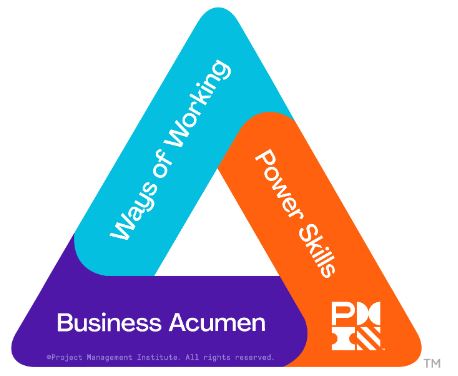103 subscribers
Go offline with the Player FM app!
286: Transform Your Team Dynamics with Servant Leadership as a Service with Erik Rueter
Manage episode 455722633 series 2543541
Welcome to the PMO Strategies Podcast + Blog, where PMO leaders become IMPACT Drivers!

PMI Talent Triangle: Power Skills
The Origins of Servant Leadership as a Service
Why the Platinum Rule is Essential to Servant Leadership as a Service
Key Tools and Benefits of Servant Leadership as a Service
- User Stories for Team Development
- Traditionally used in software development, user stories outline a feature or task without prescribing a solution, leaving space for creative problem-solving. Leaders can apply this concept to employees, documenting challenges or goals and encouraging team members to collaborate on solutions. This approach fosters autonomy and innovation within the team.
- Empathy Mapping for Insightful Understanding
- Empathy mapping, a staple in human-centered design, helps leaders understand the perspectives of their team members by asking questions such as:
- What are they seeing and hearing?
- What challenges are they experiencing?
- What are their professional and personal goals?
- This exercise builds a comprehensive view of team dynamics and motivations, fostering objectivity by treating everyone equally. For teams struggling with trust, anonymous empathy mapping can be particularly effective.
- Human-Centered Design for Leadership Iteration
- Human-centered design encourages an iterative approach to leadership, treating each interaction as an opportunity for improvement. Leaders can experiment with new engagement techniques, gather feedback, and adapt their strategies based on the results. This keeps leadership flexible and responsive to team needs, similar to a product development cycle.
- “What’s on Your Radar?” Exercise for Team Alignment
- This exercise allows team members to share their priorities in real-time, categorizing tasks as urgent, mid-term, or long-term. By centering the agenda on what’s important to each team member, leaders foster an inclusive environment that respects individual voices and minimizes unproductive meetings.
Real-World Impact: Eric Ruder’s Experience with Servant Leadership as a Service
Getting Started with Servant Leadership as a Service
- Start with Empathy Mapping
- Conduct an empathy map to understand what your team members are experiencing, their challenges, and their motivations. This objective snapshot provides a foundation for more personalized support.
- Adopt a Humble, Curious Attitude
- Approach your team with humility and curiosity. Emphasize that they are the experts in their roles and that your goal is to support them, not dictate solutions. This attitude lays the groundwork for trust and open communication.
- Iterate and Adapt Continuously
- Like any agile process, leadership should evolve based on feedback. Regularly assess how your leadership approach is resonating with the team, and don’t be afraid to make adjustments.
Final Thoughts
T hanks for taking the time to check out the podcast!
hanks for taking the time to check out the podcast!
I welcome your feedback and insights!
I’d love to know what you think and if you love it, please leave a rating and review in your favorite podcast player. Please leave a comment below to share your thoughts. See you online!
Warmly,
Laura Barnard
294 episodes
Manage episode 455722633 series 2543541
Welcome to the PMO Strategies Podcast + Blog, where PMO leaders become IMPACT Drivers!

PMI Talent Triangle: Power Skills
The Origins of Servant Leadership as a Service
Why the Platinum Rule is Essential to Servant Leadership as a Service
Key Tools and Benefits of Servant Leadership as a Service
- User Stories for Team Development
- Traditionally used in software development, user stories outline a feature or task without prescribing a solution, leaving space for creative problem-solving. Leaders can apply this concept to employees, documenting challenges or goals and encouraging team members to collaborate on solutions. This approach fosters autonomy and innovation within the team.
- Empathy Mapping for Insightful Understanding
- Empathy mapping, a staple in human-centered design, helps leaders understand the perspectives of their team members by asking questions such as:
- What are they seeing and hearing?
- What challenges are they experiencing?
- What are their professional and personal goals?
- This exercise builds a comprehensive view of team dynamics and motivations, fostering objectivity by treating everyone equally. For teams struggling with trust, anonymous empathy mapping can be particularly effective.
- Human-Centered Design for Leadership Iteration
- Human-centered design encourages an iterative approach to leadership, treating each interaction as an opportunity for improvement. Leaders can experiment with new engagement techniques, gather feedback, and adapt their strategies based on the results. This keeps leadership flexible and responsive to team needs, similar to a product development cycle.
- “What’s on Your Radar?” Exercise for Team Alignment
- This exercise allows team members to share their priorities in real-time, categorizing tasks as urgent, mid-term, or long-term. By centering the agenda on what’s important to each team member, leaders foster an inclusive environment that respects individual voices and minimizes unproductive meetings.
Real-World Impact: Eric Ruder’s Experience with Servant Leadership as a Service
Getting Started with Servant Leadership as a Service
- Start with Empathy Mapping
- Conduct an empathy map to understand what your team members are experiencing, their challenges, and their motivations. This objective snapshot provides a foundation for more personalized support.
- Adopt a Humble, Curious Attitude
- Approach your team with humility and curiosity. Emphasize that they are the experts in their roles and that your goal is to support them, not dictate solutions. This attitude lays the groundwork for trust and open communication.
- Iterate and Adapt Continuously
- Like any agile process, leadership should evolve based on feedback. Regularly assess how your leadership approach is resonating with the team, and don’t be afraid to make adjustments.
Final Thoughts
T hanks for taking the time to check out the podcast!
hanks for taking the time to check out the podcast!
I welcome your feedback and insights!
I’d love to know what you think and if you love it, please leave a rating and review in your favorite podcast player. Please leave a comment below to share your thoughts. See you online!
Warmly,
Laura Barnard
294 episodes
All episodes
×



1 Why PMI’s New Definition of Project Success Changes Everything 25:50

1 288: Reflect, Recalibrate, and Set Intentions for 2025 29:02

1 287: The Power of Asking for Help: Why Even Top Leaders Don’t Go It Alone 35:09

1 286: Transform Your Team Dynamics with Servant Leadership as a Service with Erik Rueter 31:10

1 285: 3 Keys to Build Your Project Management Career with Candice Benson 43:07

1 284: Is Your PMO Ready for the AI and Agile Revolution? with Tao Chin Liu 36:17

1 283: The Ambidextrous Project Manager with Mark Burnett 30:00

1 282: Leading from the Middle with Scott Mautz 33:52

1 281: Unveiling the Why of Behavior to Inspire Change with Amanda Frye 43:58

1 280: How Project Managers are Driving IMPACT for Nonprofits 47:17


1 278: From Struggles to Success: Samantha’s PMO Journey 24:58
Welcome to Player FM!
Player FM is scanning the web for high-quality podcasts for you to enjoy right now. It's the best podcast app and works on Android, iPhone, and the web. Signup to sync subscriptions across devices.




































